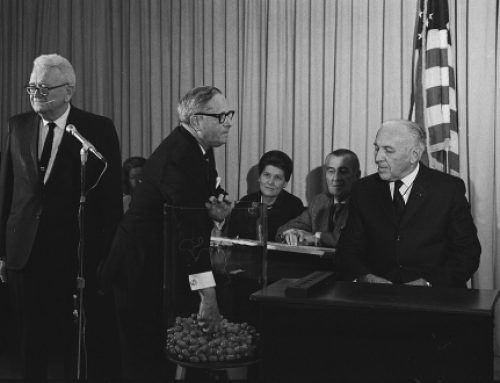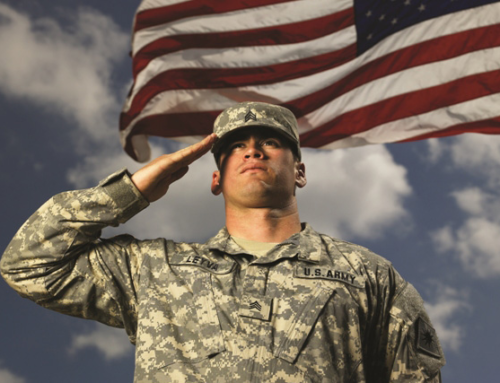December 5 – Standardized Version of Star Spangled Banner Premieres
December 5, 1917
The standardized version of “The Star-Spangled Banner” we all know and love premiered in 1917. Do you know the history behind America’s national anthem?
On September 3, 1814, following the burning of Washington and the Raid on Alexandria, Francis Scott Key and John Stuart Skinner set sail from Baltimore aboard the HMS Minden, flying a flag of truce on a mission approved by President James Madison with the objective of securing an exchange of prisoners. One of these prisoners was Dr. William Beanes, the popular elderly town physician of Upper Marlboro and a friend of Key’s who had been captured in his home for the alleged aiding of the arrest of British soldiers.
Key and Skinner boarded the British flagship the HMS Tonnant on September 7 and spoke with Major General Robert Ross and Vice Admiral Alexander Cochrane over dinner while the two officers discussed war plans. At first, the officers refused to release Beanes but relented after Key and Skinner showed them letters written by wounded British prisoners praising Beanes and other Americans for their kind treatment. Because they heard details of the plans for the attack in Baltimore, they were held captive, first above the HMS Surprise and later on the HMS Minden, until the end of the battle.
During the rainy night, Key witnessed the bombardment and observed how the fort’s smaller “storm flag” continued to fly, but once the Congreve rocket and shell barrage had stopped, he would not know the result of the battle until dawn the next morning. On September 14, the storm flag had been lowered and the larger flag had been raised.
During the attack, the HMS Terror and HMS Meteor provided some of the “bombs bursting in air” mentioned in the song.
The victory and the sight of the sight of the large United States flag flying triumphantly over the fort in the morning served as inspiration to Key. The flag, featuring fifteen stars and fifteen stripes, was made by Mary Young Pickersgill together with other workers in her home on Baltimore’s Pratt Street, later came to be known as the Star-Spangled Banner.
Aboard the ship the next day, Key wrote a poem on the back of a letter he kept in his pocket. Key and Skinner were released at twilight on September 16 and Key went on to complete the poem at the Indian Queen Hotel where he was staying and titled it “Defence of Fort M’Henry.”
Key later gave the poem to his brother-in-law Judge Joseph H. Nicholson, who saw the words fit perfectly with the popular melody “The Anacreontic Song” by British composer John Stafford Smith. Nicholson then took the poem to a printer in Baltimore, who anonymously made the first known broadside printing on September 17. Of these, two known copies survive today.
On September 20, the Baltimore Patriot and The American printed the song with the note “Tune: Anacreon in Heaven,” and the song quickly gained popularity, with seventeen newspapers from New Hampshire to Georgia printing it. Soon after, Thomas Carr of the Carr Music Store in Baltimore published the music and words together under the title “The Star-Spangled Banner.” Carr’s arrangement introduced and raised forth what became the standard deviation from “The Anacreontic Song.” The song’s popularity increased and its first public performance took place in October when Baltimore actor Ferdinand Durang sang it at Captain McCauley’s tavern.
By the early 1900s there were various versions of the song in popular use. Seeking a standard, singular version, President Woodrow Wilson tasked the United States Bureau of Education with providing the official version for future purposes. The Bureau then enlisted the help of five musicians to agree upon an official arrangement. This standardized version voted upon by these musicians premiered at Carnegie Hall on December 5, 1917, in a concert put on by the Oratorio Society of New York and conducted by Walter Damrosch. The song gained popularity throughout the current century and was played by bands during public events, such as Independence Day celebrations.
In 1930, Veterans of Foreign Wars started a petition for the United States to officially recognize “The Star-Spangled Banner” as the national anthem, which ended up getting signed by five million people. On January 31, 1930, the petition was presented to the United States House Committee on the Judiciary and Elsie Jorss-Reilley and Grace Evelyn Boudlin sang the song to the committee to refute the perception the song was too high-pitched for a typical person to sing. The Committee voted in favor and the bill was sent to the House floor for a vote and it was passed later that year. The Senate passed the bill on March 3, 1931 and President Herbert Hoover signed it on March 4, 1931, officially adopting “The Star-Spangled Banner” as the national anthem of the United States of America.





